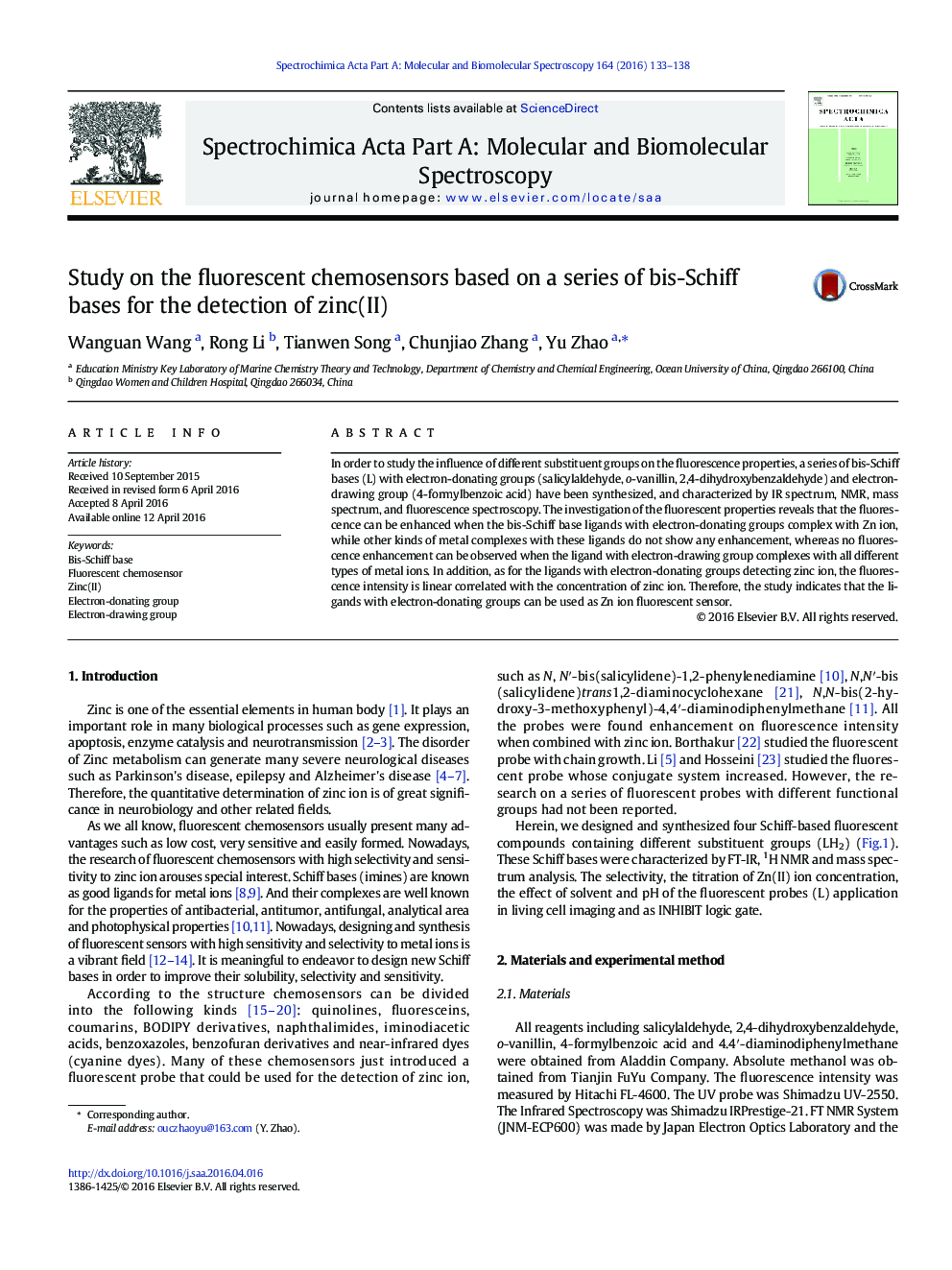| Article ID | Journal | Published Year | Pages | File Type |
|---|---|---|---|---|
| 1230923 | Spectrochimica Acta Part A: Molecular and Biomolecular Spectroscopy | 2016 | 6 Pages |
•We studied the influence of electron-donating group and electron-drawing group on the fluorescence properties.•Schiff-based ligand with electron-donating group had a better selectivity and linear relationship for detecting zinc ion.•There was no obvious regularity between the fluorescence intensity and the substituent groups.
In order to study the influence of different substituent groups on the fluorescence properties, a series of bis-Schiff bases (L) with electron-donating groups (salicylaldehyde, o-vanillin, 2,4-dihydroxybenzaldehyde) and electron-drawing group (4-formylbenzoic acid) have been synthesized, and characterized by IR spectrum, NMR, mass spectrum, and fluorescence spectroscopy. The investigation of the fluorescent properties reveals that the fluorescence can be enhanced when the bis-Schiff base ligands with electron-donating groups complex with Zn ion, while other kinds of metal complexes with these ligands do not show any enhancement, whereas no fluorescence enhancement can be observed when the ligand with electron-drawing group complexes with all different types of metal ions. In addition, as for the ligands with electron-donating groups detecting zinc ion, the fluorescence intensity is linear correlated with the concentration of zinc ion. Therefore, the study indicates that the ligands with electron-donating groups can be used as Zn ion fluorescent sensor.
Graphical abstractFigure optionsDownload full-size imageDownload as PowerPoint slide
